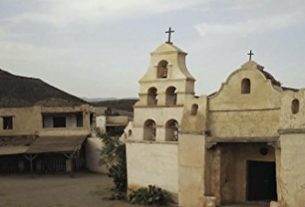March 3, 1996 — In Mexico, various Indian peoples still play ancient instruments. And their songs and dances — which tell of uprisings against their masters — pay tribute to their ancestors.
These Mexicans play African “hand pianos” and perform “the dance of the black people.” Mexican “corridos” — or song-stories — tell of slave uprisings. And the marimbas of Mexico, as well as those of Central America and Ecuador, all have their origins in Africa.
All are examples of the still thriving African legacy in Mexico.
Since 1492, the history of the Americas has been forged by three cultures: indigenous, European, and African – the third root of the Americas, according to the late University of Veracruz professor, Gonzalo Aguirre Beltrán, who was considered Mexico’s foremost expert on the African influence on Mexican culture.
The early African presence in the Americas is normally associated with the slave trade in the United States, the Caribbean, Brazil, Central America, Colombia and Peru. Not generally taught in history textbooks is that Mexico was also a key port of entry for slave ships and consequently had a large African population.
In fact, during the colonial era, there were more Africans than Europeans in Mexico, according to Aguirre Beltrán’s pioneering 1946 book, “The Black Population in Mexico.” And he said they didn’t disappear, but in fact took part in forging the great racial mixture that is today Mexico.
“Because of race mixture, much of the African presence is no longer discernible except in a few places such as Veracruz and the Costa Chica in Guerrero and Oaxaca,” wrote Aguirre Beltrán.
In Mexico, many of the Africans that entered came to what are now the states of Yucatan, Michoacan, Tlaxcala, Mexico, Chiapas, Veracruz, Guerrero and Oaxaca. Contrary to popular thought, they did not remain in the south but migrated throughout the whole of Mexico, where they were employed in occupations such as mining, the textile industry, ranching, fishing and agriculture. Blacks in Mexico weren’t simply slaves. Many were explorers and cofounders of settlements as far north as Los Angeles and other parts of what is today the Southwest United States.
Prior to independence from Spain, there were numerous slave rebellions throughout the Americas, including in Mexico. The first documented slave rebellion in Mexico occurred in 1537; this was followed by the establishment of various runaway slave settlements called “palenques.” Some rebellions were in alliance with Indians and mestizos even as far north as Chihuahua. In 1608, Spaniards negotiated the establishment of a free black community with Yagna, a runaway rebel slave. Today, that community in Veracruz bears its founder’s name.
The principal guerrilla fighters for Mexican independence from Spain were Indians, mestizos and mulattos. One of the primary leaders of the independence movement, José María Morelos y Pavón, was mulatto, or of African ancestry, as was Vicente Guerrero, Mexico’s second president, who officially abolished slavery in 1822. Slavery was actually not done away with until 1829.
Of note, Aguirre Beltrán’s research was not well-received in Mexico, says Gabriel Moedano Navarro, director of ethnohistory at the National Museum of Anthropology in Mexico. By 1946, the psyche of the Mexican nation as a mixture of Indian and Spanish blood was well-formed.
Also hidden from history is Mexico’s role as a sanctuary to African American slaves during the 19th century. Unknown to even most historians, descendants of these slaves still live in Mexico.
In the summer of 1850, the Mascogos, composed of runaway slaves and free blacks from Florida, along with Seminoles and Kikapus, fled south from the United States, to the Mexican border state of Coahuila. Accompanying the Seminoles were also ‘Black Seminoles’ — slaves who had been freed by the tribe after battles against white settlers in Florida.
The three groups eventually settled the town of El Nacimiento, Coahuila, where many of their descendants remain, including some of our distant relatives.
The African presence in Mexico is not so much denied as it is obscured. Aguirre Beltrán’s work has brought to light something most Mexicans and Mexican Americans have historically been unaware of — that they, like other Latinos, have not only Indian and Spanish blood, but African blood as well.
In times of racial discord between Latinos and African Americans, this historical confluence of cultures should serve as a reminder that both communities share common ancestors. In fact, if we probe far enough, we’re all related.
Latino Spectrum is a nationally syndicated column, distributed by Chronicle Features.
By Roberto Rodriguez and Patrisia Gonzales – © 1996 Chronicle Features – Reproduced in MexConnect with Permission.

